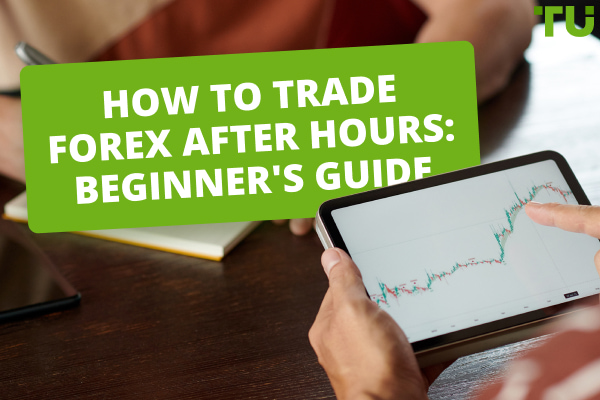Mastering risk management in Forex trading
Risk management in Forex involves strategies and techniques used by traders to minimize potential losses while trading currencies, such as setting stop-loss orders and position sizing, to protect their capital from adverse market movements. It's a crucial aspect of successful trading to ensure long-term profitability and minimize financial risks.
When navigating the incredibly complex world of Forex trading, traders are continuously striving to minimize the risk they take onboard. Employing an effective and well-thought-out risk management strategy is an integral part of becoming a successful trader that can stand firm against whatever unforeseen circumstances the market throws their way. In this article I’ll be explaining what risk and risk management are, the most common mistakes made by Forex traders, why risk management is important, basic risk management strategies, and how to implement them into trading.
What is risk management in trading?
Risk Management in trading is the practice of managing the risk that coincides with foreign currency exchanges. To understand it, we must first answer this: what is risk in Forex?
In Forex trading, risk is defined as the chances that a foreign currency exchange will incur losses. High-risk trades are considered more dangerous, with a bigger potential for losses. Low-risk trades are stable and somewhat predictable. There are many aspects to Forex trading that involve risk.
These are just some of the risks that come with Forex trading:
-
Market risk: This is the most basic risk – that a currency pair won’t move in the expected direction and will go against a trader’s projection analysis
-
Interest rate risk: The interest rate on a nation’s currency in relation to another nation’s currency affects the costs and potential losses on an individual trade
-
Political risk: Forex is incredibly sensitive to the political events of any given nation. Political turmoil, regional instability, or a country’s domestic economy are examples of factors that impact a currency’s value and increase its political risk
-
Liquidity risk: Liquidity can be affected by the currencies featured in a pair, and by the time of day, amongst other things. If a trader cannot easily enter or exit a trade (low liquidity), they incur liquidity risk
-
Leverage risk: When utilizing leverage, traders add leverage risk. Using leverage, which is in a sense ‘borrowed money’, increases risk significantly
-
Risk of ruin: The “risk of ruin” refers to the prospect of a trader losing all their capital. Unfortunately, this is a possibility for all traders, especially beginners
With so many types of risk present in Forex, the idea of trading can seem daunting. However, as with most problems in Forex, there is a solution – risk management.
Risk management refers to the practice of applying certain techniques and employing various tools in order to minimize the potential risks that come with investing in Forex. Risk management allows traders to implement a set of rules and measures to apply to their own trading strategy, to prevent incurring significant losses. Keep reading as we delve into risk management tips for trading.
Importance of risk management in Forex
Risk management is one of the most important things to take into consideration when trading Forex. Without it, traders may end up seeing negative income, incurring heavy losses, or even worse – completely losing all their capital. Experienced and well-studied traders create detailed risk management plans that dictate everything about a trade, from the point of entry up to the exit criteria. Without a structured plan, a trader is no different to a gambler watching numbers on a screen, using nothing but their own feelings.
Risk management is particularly important when used in Forex trading compared to other forms of trading like stocks or commodities, for the following reasons:
-
Forex Market Volatility: Forex is known for being volatile. Currency pairs can see huge fluctuations in short amounts of time, leading to significant profits or losses. Risk management mitigates the impact
-
24-Hour Market: Forex markets are open 24 hours a day, five days a week, making it difficult to constantly monitor open positions. Risk management tools like stop-loss orders can counter this issue to limit losses while not actively trading
-
Leverage: Leverage usage in Forex is comparatively higher than in other forms of asset trading, which leads to an increased level of risk. Risk management allows traders to control the risks associated with leverage
-
Variability in Currency Pairs: Different currency pairs have varying levels of volatility and liquidity. Risk management strategies can be customized to suit the characteristics of each currency pair, allowing traders to adapt to market conditions
-
Long-Term Sustainability: Successful Forex trading is about achieving consistent profits over time. Risk management ensures that traders can continue to trade and build their accounts without excessive setbacks
Applying the best risk management techniques and methods has plenty advantages. Some of the benefits of rigorously managing risk are:
-
Capital Preservation: Risk management strategies help protect your capital and assets from significant losses
-
Mitigating Uncertainty: Risk is inherent in all decision-making processes. By implementing risk management, you acknowledge and address uncertainties, preparing yourself for unforeseen circumstances
-
Emotional Stability: Managing risk reduces emotional stress and impulsive decision-making. If you have a clear plan for managing risk, you're less likely to make decisions based on fear or greed
-
Risk Diversification: Risk management includes diversifying trading strategies and assets. Diversification spreads risk and reduces the impact of losses on an entire portfolio
-
Risk-Reward Assessment: Risk management encourages traders to assess potential risks and rewards before entering a trade. This analysis helps traders make more informed decisions and avoid trades with unfavorable risk-reward ratios
Common mistakes of Forex traders
Everybody makes mistakes. In Forex, however, small, easily avoidable mistakes can lead to an enormous loss of capital, which is why risk management is so vital. Although more commonplace for novice traders, these are some of the most common mistakes made when trading Forex:
-
1
Lack of education: As with almost any endeavor, knowing more about Forex trading leads to a better understanding of it. If a trader lacks the required knowledge, their decision making will be impaired, leading to losses
-
2
Emotional Trading: Emotions like fear or greed can lead to poor decisions. If a trader is basing his decisions on feelings, and not statistical analysis, he will incur losses. The Forex market does not move based on emotions – it follows mathematical patterns
-
3
Overtrading: Trading too frequently or for too long is common amongst beginner traders, particularly when they’re trying to recover from a losing streak. This usually only yields poor results
-
4
Excessive Leverage: The temptation for a trader to use leverage, and amplify the amount of capital they control, is hard to resist. However, the increased profit potential is matched by an increased risk. Inexperienced traders looking to get rich quick often make the mistake of taking on too much leverage
-
5
Poor Risk Management: Not having a concrete blueprint for how to manage risk is one of the biggest mistakes novice traders make. Risking too much capital in a single trade, or not predetermining when to exit a trade, often leads to significant losses
Number 5 on this list is one of the most common mistakes traders make. Since risk management is so essential to a trader’s success, read ahead for tips and strategies. For further TU insight into why traders lose money, click here.
Basic risk management strategies
We’ve already looked at why risk management is so important, but what about how to implement it? There are several components to developing an effective and simple risk management strategy or plan. Let’s look at some of them.
Position Sizing
You should base the size of your position based on your account size (actual capital) and risk tolerance. A good rule of thumb adopted by many traders is to risk no more than 1-2% of your total account balance on any individual trade. If you have $1000, stick to positions of $10-20. This contributes to manageable levels of loss.
Stop-Loss Orders
Set stop-loss orders whenever you enter a new trade. A stop-loss order sets a predetermined price limit to automatically close at if your position hits a particular price. For example, imagine you buy a long position on the EUR/USD pairing at a rate of 1.2000, and set a stop-loss of 1.1950 (0.0050 below your entry price). If EUR/USD drops in value to 1.1950, your stop-loss order is triggered, and your broker will automatically sell your position. This protects you from incurring further losses and makes an automated decision for you, so you don’t fall prey to losing more trying to cover a loss.
Take-Profit Orders
Take-profit orders work similarly to stop-loss orders, but for profit. You should set take-profit orders to prevent greed controlling your decision-making. Take-profit orders tell a broker to automatically sell a position when it reaches a certain level of profit. Imagine you open a long position at 157.00 on the EUR/JPY pairing and set a take-profit order at 160.00. If the currency pair hits 160.00, the automated take-profit order exits your trade. By setting this limit, you prevent yourself from giving in to greed and allowing the trade to remain open to decrease in value again.
Risk/Reward Ratio
The risk versus potential reward is something you should always consider when opening a position. Aim for a risk/reward ratio of 2:1. That means the potential profit from trading a position should be double the amount of money you risk.
Available Funds
You should never invest in Forex (or any other market) with money that you can’t afford to lose. The capital you use to trade should be disposable income, money that you don’t need for basic survival. Spending outside of what you can afford leads to risky behavior and weakened emotional discipline.
To read more about Traders Union’s risk management strategies, see this article.
Implementing risk management in your Forex trading
We’ve already looked at all the aspects of risk management – the last step is implementing it. Before beginning your Forex investment career, take care to follow these simple steps to apply stringent risk management to your overall strategy.
-
1
Assess your risk tolerance: Begin by evaluating your risk tolerance. Determine the maximum amount of capital you are willing to risk on an individual trade as a percentage of your overall portfolio (aim for 1-2%)
-
2
Set Clear Stop-Loss Orders: For each trade, establish a specific stop-loss order based on technical or fundamental analysis. This predetermined exit point enforces emotional discipline and limits potential losses
-
3
Define Take-Profit Levels: Determine your take-profit levels before entering a trade. These levels should be based on your risk-reward analysis and offer a favorable risk-to-reward ratio, preferably 1:2 and above
-
4
Calculate Position Size: Decide your position size based on your stop-loss distance and risk tolerance. Ensure that you're not risking more than your predefined percentage of capital on any single trade
-
5
Diversify: Avoid overexposure to a single currency pair. Diversify your trades across different pairs and assets to spread risk and minimize the impact of individual losses
-
6
Regularly Review: Continuously monitor your open positions and overall risk exposure. Adjust your stop-loss and take-profit levels accordingly, taking market conditions into consideration. Always stick to your risk management plan
In conclusion, efficient risk management is one of the core principles for ensuring a successful trading career. If a Forex trader is not carefully planning their approach to trading, setting stop-loss and take-profit orders and making contingency plans, they inevitably leave themselves open to bigger potential losses. Forex trading is about discipline and attentive planning for all possible outcomes. If you’d like to learn more about the best Forex money management rules and tactics, see Traders Union article on the subject.
Best Forex brokers

FAQs
Why is risk management crucial in Forex trading?
Risk management allows traders to plan for different outcomes of their trades and apply emotional discipline. It reduces the potential for losses to become too significant for them to recover from.
What is a stop-loss order?
A stop-loss order is a predetermined amount, set by a trader, that a position will sell at. If a currency pair moves a specific amount in the opposite direction to the trader’s opening position, a stop-loss order triggers its sale before further losses can be incurred.
What is the recommended risk-reward ratio in Forex trading?
Experts recommend a risk-reward ratio of 2:1, meaning that the potential profit from opening a trade should be double the amount of money that’s risked.
Can risk management completely eliminate losses in Forex trading?
No. Although effective risk management strategies can minimize losses, they can’t protect traders from unforeseen circumstances, such as unexpected price movements, regulatory changes, or liquidity risk.
Team that worked on the article
Jason Law is a freelance writer and journalist and a Traders Union website contributor. While his main areas of expertise are currently finance and investing, he’s also a generalist writer covering news, current events, and travel.
Jason’s experience includes being an editor for South24 News and writing for the Vietnam Times newspaper. He is also an avid investor and an active stock and cryptocurrency trader with several years of experience.
Dr. BJ Johnson is a PhD in English Language and an editor with over 15 years of experience. He earned his degree in English Language in the U.S and the UK. In 2020, Dr. Johnson joined the Traders Union team. Since then, he has created over 100 exclusive articles and edited over 300 articles of other authors.
The topics he covers include trading signals, cryptocurrencies, Forex brokers, stock brokers, expert advisors, binary options. He has also worked on the ratings of brokers and many other materials.
Dr. BJ Johnson’s motto: It always seems impossible until it’s done. You can do it.
Mirjan Hipolito is a journalist and news editor at Traders Union. She is an expert crypto writer with five years of experience in the financial markets. Her specialties are daily market news, price predictions, and Initial Coin Offerings (ICO). Mirjan is a cryptocurrency and stock trader. This deep understanding of the finance sector allows her to create informative and engaging content that helps readers easily navigate the complexities of the crypto world.










